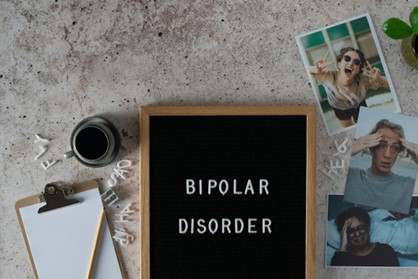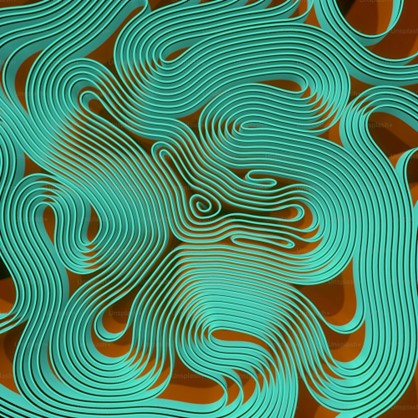Bipolar disorder problem, alternatively referred to as manic-depressive illness, is an intricate mental health condition that impacts a substantial number of individuals across the globe. In this all-encompassing guide, we aim to offer valuable insights and information for individuals who have recently received a diagnosis of bipolar disorder problem. Our goal is to assist them in navigating the challenges and uncertainties associated with this condition. From gaining an understanding of the various types of bipolar disorder, definition to exploring treatment options, symptoms and effective coping strategies, our guide is meticulously crafted to empower those living with bipolar disorder to lead fulfilling and well-balanced lives.
What is Bipolar Disorder?
Bipolar disorder, also known as manic-depressive disorder, is a chronic mental health condition that causes extreme shifts in mood, energy levels, and activity levels. It is important to understand what bipolar disorder is and its symptoms in order to recognize and manage this condition effectively. Individuals with bipolar disorder experience two distinct types of episodes: manic episodes and depressive episodes. During manic episodes, individuals feel an intense surge of energy and euphoria. They may engage in impulsive behavior, have racing thoughts, and experience difficulty sleeping. On the other hand, depressive episodes are characterized by feelings of sadness, hopelessness, and a lack of interest or pleasure in activities.
These mood swings can greatly impact daily functioning and relationships. It is crucial to seek professional help if you or someone you know is experiencing these symptoms.
There are several subtypes of bipolar disorder, including bipolar I, bipolar II, cyclothymic disorder, as well as other specified and unspecified bipolar disorders. Bipolar I is the most severe form of the illness and is identified by manic episodes that last for at least seven days or require hospitalization.
Understanding what bipolar disorder entails can help individuals better manage their symptoms and seek appropriate treatment options. If you suspect that you or someone you know may be suffering from bipolar disorder, it is important to consult with a healthcare professional for an accurate diagnosis and personalized treatment plan.
Understanding the Different Types of Bipolar Disorder
To effectively manage bipolar disorder, it is crucial for individuals who have recently been diagnosed to have a comprehensive understanding of the various types and subtypes of the condition. This knowledge not only provides clarity about their specific symptoms but also opens up possibilities for suitable treatment options. Bipolar I disorder, which entails manic episodes that may necessitate hospitalization, represents the most severe manifestation of this disorder. On the other hand, bipolar II disorder is characterized by recurring depressive episodes and hypomanic episodes that are less intense than full-blown mania. By grasping the nuances of these different types, individuals can better navigate their journey towards managing bipolar disorder effectively.
Common Symptoms of Bipolar Disorder
Recognizing the symptoms of bipolar disorder is crucial for individuals recently diagnosed with the condition. Manic episodes are characterized by elevated mood, increased energy levels, racing thoughts, decreased need for sleep, reckless behavior, and grandiose ideas. Depressive episodes, on the other hand, involve persistent sadness, loss of interest in activities, changes in appetite and sleep patterns, difficulty concentrating, feelings of guilt or worthlessness, and even thoughts of suicide.
It is important to note that not everyone with bipolar disorder experiences symptoms of both manic and depressive episodes. Some individuals may primarily experience one type of episode, while others may have mixed episodes that involve symptoms of both mania and depression. By being aware of these symptoms, individuals can seek timely help and support from healthcare professionals to manage their condition effectively.
The Causes and Risk Factors of Bipolar Disorder
The exact causes of bipolar disorder problem are not yet fully understood, but research suggests that a combination of genetic, environmental, and neurochemical factors contribute to its development. Individuals with a family history of bipolar disorder are at a higher risk of developing the condition themselves. Additionally, imbalances in certain brain chemicals, such as dopamine and serotonin, are thought to play a role in the onset of bipolar disorder.
Environmental factors, such as severe stress, trauma, or substance abuse, can trigger or exacerbate bipolar symptoms in susceptible individuals. Understanding these causes and risk factors can help individuals recently diagnosed with bipolar disorder gain insight into their condition and work towards managing it effectively.
Diagnosing Bipolar Disorder
Accurate diagnosis of bipolar disorder is crucial for individuals to receive appropriate treatment and support. Diagnosing bipolar disorder typically involves a comprehensive evaluation by a mental health professional, including a thorough review of symptoms, medical history, and family history. The healthcare provider may also conduct physical examinations and order blood tests to rule out other potential causes of the symptoms.
In some cases, the healthcare provider may recommend psychological assessments and interviews to gather additional information about the individual’s mood patterns and experiences. By working closely with their healthcare provider, individuals can ensure an accurate diagnosis and develop a personalized treatment plan that addresses their unique needs.
Treatment Options for Bipolar Disorder
Bipolar disorder problem is a chronic condition that requires long-term management. Fortunately, there are several effective treatment options available to help individuals stabilize their moods and improve their overall quality of life. Treatment for bipolar disorder typically involves a combination of medication, therapy, and lifestyle changes.
Medications used to manage bipolar disorder include mood stabilizers, antipsychotics, and antidepressants. These medications work to balance brain chemicals and regulate mood swings. Therapy, such as cognitive-behavioral therapy (CBT) or dialectical behavior therapy (DBT), can help individuals develop coping strategies, manage stress, and improve relationships. Additionally, certain lifestyle changes, such as maintaining a regular sleep schedule, engaging in regular exercise, and practicing stress-reduction techniques, can contribute to the overall management of bipolar disorder.
Medications Used to Manage Bipolar Disorder
Medications play a crucial role in managing bipolar disorder and stabilizing mood swings. Mood stabilizers, such as lithium and valproate, are commonly prescribed to help prevent manic and depressive episodes. Antipsychotic medications, such as quetiapine and olanzapine, can also be used to manage bipolar symptoms and promote stability. In some cases, antidepressant medications may be prescribed alongside mood stabilizers to alleviate symptoms of depression.
It is important for individuals recently diagnosed with bipolar disorder to work closely with their healthcare provider to find the most effective medication regimen. Regular monitoring and adjustment of medications may be necessary to ensure optimal results and minimize side effects. It is also essential to communicate openly with the healthcare provider regarding any concerns or changes in symptoms.
Therapy and Support for Individuals with Bipolar Disorder
Bipolar disorder problem, also known as manic depressive illness, is a mental health condition that can greatly benefit from therapy. Two effective types of therapy for bipolar disorder are cognitive-behavioral therapy (CBT) and dialectical behavior therapy (DBT). As definition, CBT aims to identify and modify negative thoughts and behaviors that contribute to mood swings, while DBT focuses on enhancing emotional regulation, interpersonal effectiveness, and distress tolerance through skills training.
By participating in therapy, individuals with bipolar disorder can gain valuable tools and strategies to effectively manage stress, cope with mood swings, and improve overall well-being. In addition to therapy, support groups and peer support programs can also provide a sense of community and understanding for those living with bipolar disorder.
Lifestyle Changes to Manage Bipolar Disorder Illness
In addition to medication and therapy, certain lifestyle changes can significantly contribute to the management of bipolar disorder illness. Maintaining a regular sleep schedule is crucial, as disruptions in sleep patterns can trigger mood swings. Engaging in regular exercise, such as walking, jogging, or yoga, can help regulate mood and reduce stress. Eating a nutritious diet and avoiding excessive alcohol or drug use can also support overall mental and physical well-being.
Implementing stress-reduction techniques, such as deep breathing exercises, meditation, or journaling, can provide individuals with effective coping strategies during challenging times. It is important for individuals recently diagnosed with bipolar disorder to prioritize self-care and establish a routine that promotes stability and balance in their lives.
Coping Strategies for Those Recently Diagnosed with Bipolar Disorder Illness
Receiving a bipolar disorder diagnosis can be overwhelming and challenging. However, there are several coping strategies that individuals can employ to manage their condition effectively. First and foremost, education about bipolar disorder is key. Understanding the condition, its symptoms, and its treatment options empowers individuals to make informed decisions about their health.
Developing a support network of trusted friends, family members, and mental health professionals can provide individuals with the necessary emotional support and guidance. It is also important to communicate openly with loved ones about the condition, as this fosters understanding and empathy. Engaging in stress-management techniques, engaging in creative outlets, and practicing self-care activities are additional strategies that can help individuals navigate the complexities of bipolar disorder.
Support Networks and Resources for Individuals with Bipolar Disorder in Australia
Individuals recently diagnosed with bipolar disorder in Australia can access various support networks and resources to assist them on their journey. Organizations such as Beyond Blue, Black Dog Institute, and SANE Australia offer valuable information, helplines, and online forums where individuals can connect with others and seek support. Mental health professionals, including psychiatrists, psychologists, and counselors, can provide specialized assistance and treatment.
It is important for individuals to reach out and take advantage of these resources, as they can play a crucial role in the management and well-being of individuals with bipolar disorder.
Conclusion
Being recently diagnosed with bipolar disorder can be overwhelming, but it is crucial to remember that with the right support and treatment, individuals can lead fulfilling and balanced lives. Understanding what is bipolar disorder, its definition, the different types of bipolar disorder, recognizing common bipolar disorder symptoms, and exploring treatment options are essential steps in effectively managing this condition. By implementing lifestyle changes, engaging in therapy, and utilizing coping strategies, individuals can navigate the challenges of bipolar disorder with resilience and strength. Support networks and resources are available to provide assistance along the way.
Contact us: WHS and Training Compliance Solutions for your next MHFA Training.
Access Mental Health Awareness Books from Amazon: Mental Health Books












